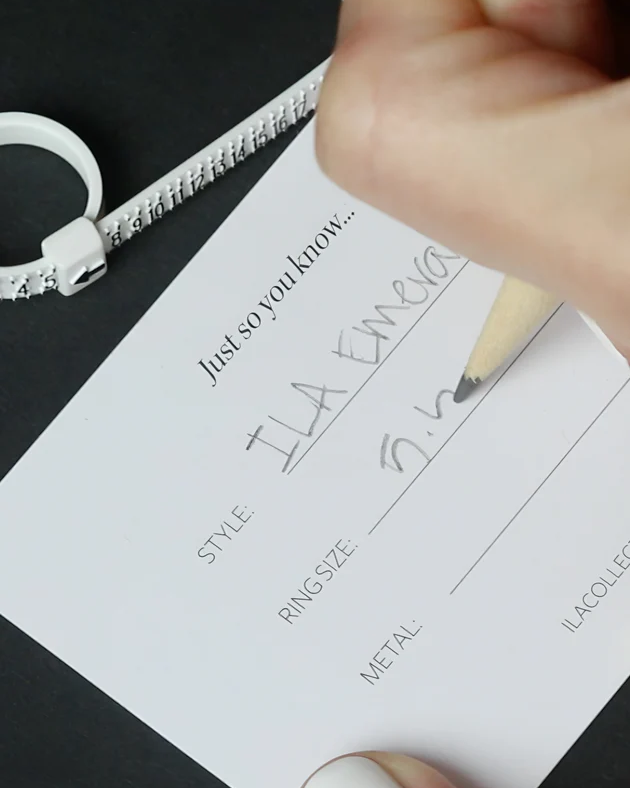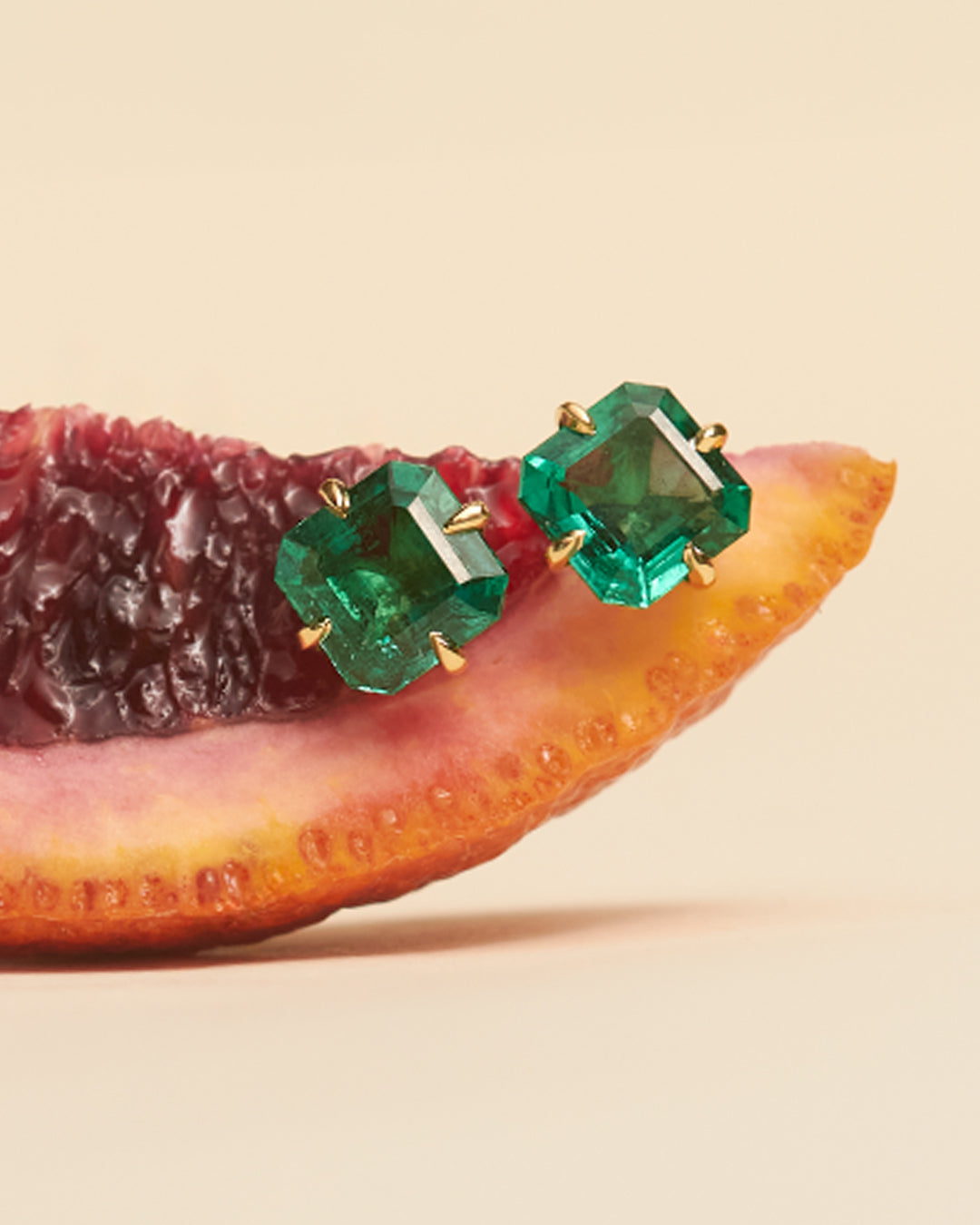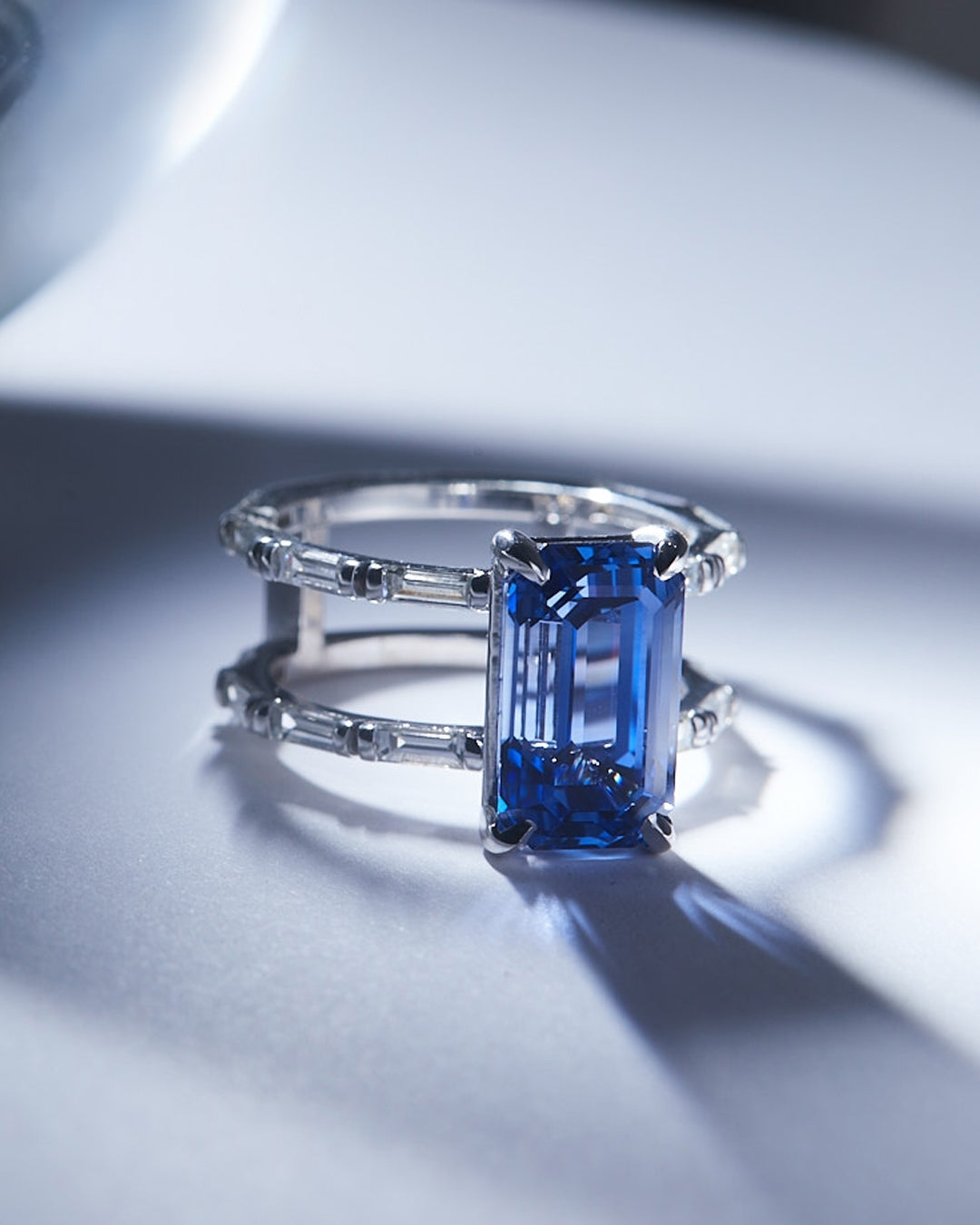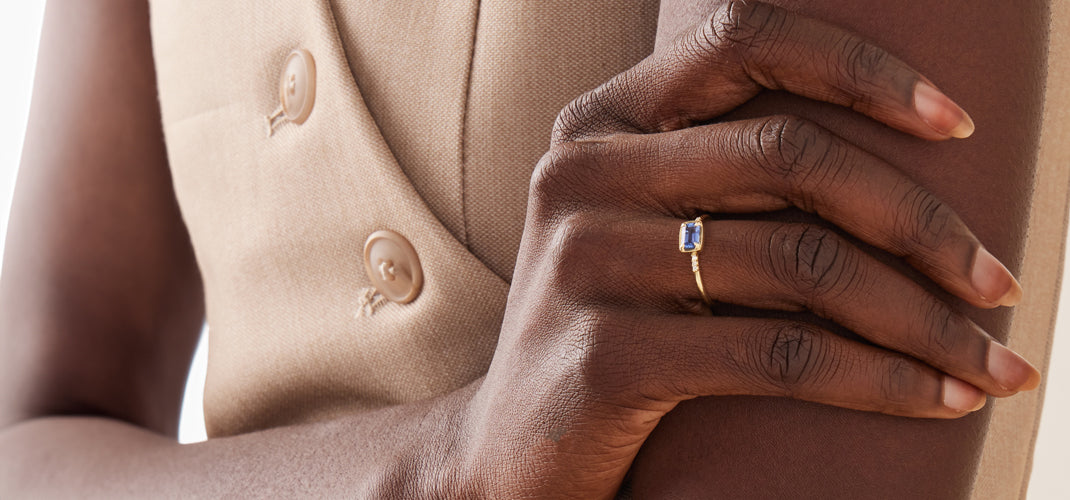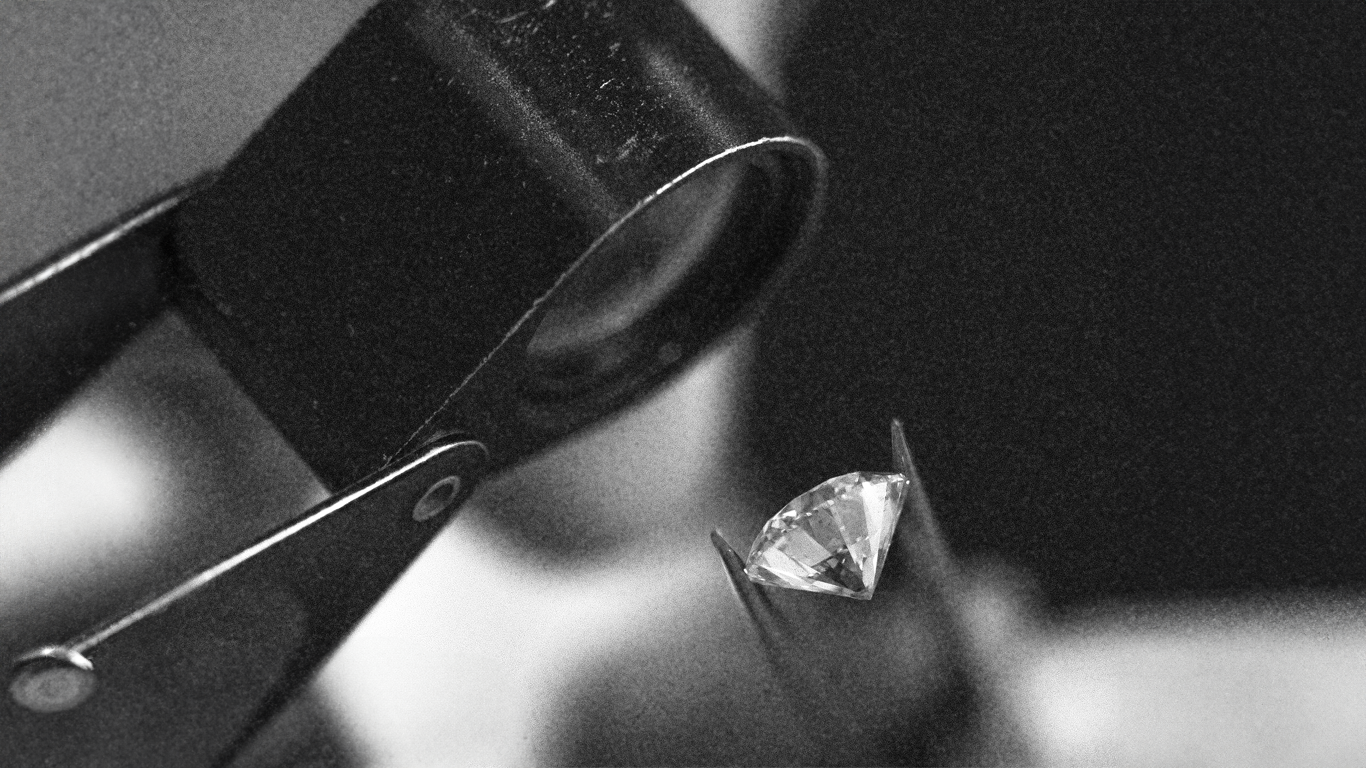
What are the Ideal Proportions for a Round Brilliant Cut Diamond?
The fascination with an ideal cut diamond comes from its beauty and ability to capture and reflect light. Among all the diamond cuts, the round brilliant cut stands out and has the most fire and brilliance. However, the proportions of a round brilliant diamond are what defines it. They add to its shine. The proportions of diamonds are necessary when determining how light interacts with a diamond. This affects its brilliance, fire, and scintillation. It is beneficial that you understand the ideal proportions for a round brilliant cut. This is akin to unlocking the secrets of its radiance.
Understanding Diamond Proportions
Diamond proportions refer to the exact measurements and angles of a diamond's facets relative to each other. Diamond proportions impact how light interacts with the diamond. Ultimately these determine its brilliance, fire, and scintillation. These are the three key components of a diamond's visual appeal and are essential characteristics of a well-cut diamond.
- Brilliance refers to the brightness created by the internal and external reflection of light.
- Fire describes the dispersion of light into the colors of the spectrum.
- Scintillation refers to the flashes of light and sparkle as the diamond moves.
A poor-cut diamond may lack these qualities, unlike an ideal-cut diamond. The absence of this trio makes a diamond appear dull and lifeless. When examining a diamond, observe how it interacts with light. Look for vibrant flashes of color and sparkle.
To understand the importance of diamond proportions, you must know the structure of a diamond. A typical round brilliant diamond comprises several key facets. Each of these facets serves a unique purpose in manipulating light. These facets include;
- The table (the large, flat facet on the diamond's surface)
- The crown (the upper portion above the girdle)
- The pavilion (the lower part below the girdle)
- The girdle (the narrow band surrounding the diamond's widest point)
- The culet (the small facet at the diamond's bottom point).
The Role of Symmetry and Polish
Aside from the core proportions, a diamond's symmetry and polish are finishing touches that enhance its beauty.
- Symmetry refers to the alignment and uniformity of the diamond's facets
- Polish means the smoothness of those facets.
Both are essential for the easy passage of light. They contribute to the diamond's overall sparkle and aesthetic appeal. Understanding these details about diamond proportions is like having a secret map. It guides you to the treasure: the best quality and most sparkling diamond. It gives you the power to make smart decisions. This way, you are sure to pick a diamond that doesn't just look pretty but stands out as a top-notch gem.
Ideal Proportions for Round Brilliant Diamond Cuts
Achieving the ideal balance of diamond proportions is critical when creating a round brilliant-cut diamond. Ideal diamond proportions directly impact the stone's brightness, fire, and overall aesthetic appeal. There's no one-size-fits-all formula for ideal proportions. However, certain guidelines have emerged based on empirical evidence and expert analysis. Here, we look at the important factors that define the ideal proportions for round brilliant cuts:

Table Size
The table is the large, flat top surface of the diamond. The table, being the largest facet on the diamond's surface, plays a crucial role in light reflection. A too-large or too-small table can lead to a loss of light through the sides or bottom of the diamond. This diminishes its brilliance. The right table size captures and reflects light beautifully, enhancing its sparkle. For an ideal round diamond cut, the optimal table percentages typically fall within the range of 54% to 57% of the diamond's diameter.
Crown Height and Angle
The crown's height and angle are also important for a perfect round diamond cut. They greatly affect the diamond's ability to reflect and refract light. A well-proportioned crown directs light rays back to the viewer’s eye. This improves brilliance and fire. Ideally, the crown height should be around 16% to 18% of the diamond's total depth. It should also have a crown angle of approximately 34 to 35 degrees.
Total Depth
The depth of a diamond is the measurement from the table to the culet of the diamond. This measurement is usually in millimeters. In addition to the absolute measurement, the depth is often represented as a percentage. It is calculated by dividing the depth of the diamond by its average diameter and multiplying by 100. The perfect depth percentage in a round diamond cut normally ranges from about 59.3% to 62.6%. However, slight variations can still result in a beautiful diamond. This depends on other factors like the crown and pavilion angles.
Pavilion Depth and Angle
The pavilion is the bottom part of the diamond. It stretches from the girdle to the tip (or culet). The pavilion's depth and angle control the internal reflection of light within the diamond. An optimal pavilion depth ensures that light entering the diamond is reflected back to the viewer. This maximises brilliance. Generally, the pavilion depth should range from 42.5% to 43.5% of the diamond's total depth. This should be accompanied by a pavilion angle of approximately 40.6 to 41 degrees.
Girdle Thickness
The girdle is the narrow band around the widest part of the diamond. It acts as the boundary between the crown and pavilion. It can vary in thickness and is often the point at which the diamond is set into jewelry. The girdle acts as the diamond's perimeter and should exhibit uniformity and durability. While variations in girdle thickness are acceptable, extremes should be avoided to maintain structural integrity and visual appeal. A medium girdle thickness is often preferred for an excellent diamond proportion. It provides a balance between strength and aesthetics.
Culet Size
The culet is located at the bottom point of the diamond. It affects light reflection and overall appearance. A small or nonexistent culet minimises light leakage and enhances brilliance. For an ideal diamond cut, the culet should be absent or very small. This allows for optimal light performance.
Finding the Perfect Cut Diamond Made Easy with ILA's AI
Understanding the right proportions of a diamond can be daunting if you are not versed in gemology. It involves navigating through complex measurements that influence a diamond's brilliance and overall beauty. Recognising this challenge, ILA simplifies the process. Our advanced AI, designed with the expertise of MIT scientists and gemologists, focuses on the crucial aspect of diamond proportions. You can learn more here.
Our technology examines each diamond to ensure it meets high standards of sparkle without you needing to understand the intricate details. This approach offers a straightforward path to owning a stunning, perfectly proportioned diamond. It removes the guesswork and makes your selection enjoyable and stress-free. Opt for the ILA Collection for an easy, informed diamond selection experience.
How To Identify A Poor Cut
As we have established, a well-cut diamond can be incredibly stunning. However, a poorly cut diamond can considerably reduce its visual attractiveness. Let us go over how to spot a poor-cut diamond so you can make an informed decision while looking for the perfect stone.
Proportion and Symmetry
An ideal cut diamond should have symmetrical facets that reflect light evenly. This results in a brilliant sparkle. In contrast, a poorly cut diamond may have uneven proportions, with facets that are misaligned or disproportionate. Look for symmetry in the diamond's facets and ensure that they are properly aligned.
Depth and Table Percentage
Another aspect to consider when it comes to diamond proportion is the depth and table percentage of the diamond. A poorly cut diamond's depth may be too shallow or too deep. As a result, light will leak out through the bottom or sides instead of bouncing back through the table for maximum brilliance. Similarly, an excessively big table percentage might provide a drab impression.
Girdle Thickness
A poorly cut diamond may have a girdle that is either thin or too thick. This will compromise its durability and appearance. A narrow girdle increases the chance of chipping or damage, whereas a broad girdle reduces the diamond's beauty and brilliance.
Certification and Grading
Finally, one of the most reliable ways to identify a poor-cut diamond is to review its certification and grading report. Reputable gemological laboratories include the Gemological Institute of America (GIA), American Gem Society (AGS), and International Gemological Institute (IGI), which are used more for lab-grown diamonds. These bodies assess diamonds based on various factors, including cut quality. Look for diamonds certified by these organisations and review the cut grade assigned to them.
Final Thoughts
Understanding the basic aspects of diamond proportions is advantageous. It allows you to appreciate the precise artistry required when cutting a diamond to maximise its optical performance. You may be shopping for an engagement ring, anniversary gift, or special occasion. Choosing an ideal cut diamond will ensure that your purchase will sparkle and stay dazzling for a long time. By paying attention to these factors, you can ensure that you're investing in a diamond cut that exhibits exceptional beauty and value.


